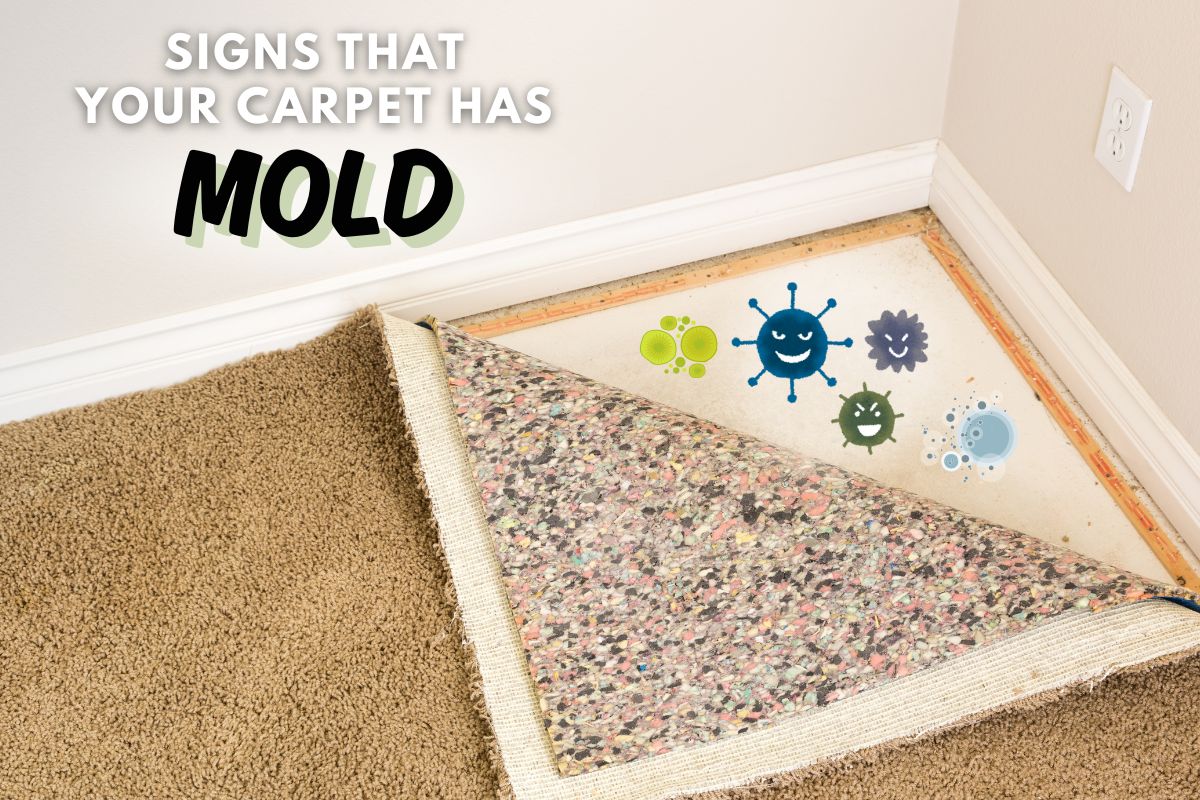Carpet is a cozy and durable flooring choice, but it can also be susceptible to mold growth when exposed to moisture. As certified carpet cleaning professionals, we’re often asked: “How do I know if there’s mold in my carpet?” or “Can carpet have mold without me seeing it?” The truth is — yes, it can, and detecting it early is critical for protecting your home and health.
In this article, we’ll explain the most reliable ways to detect carpet mold, what it may look or smell like, how to test for it, and when it’s time to call in a professional.

Can Carpet Have Mold?
Yes — carpet can harbor mold, particularly if it has been exposed to moisture for more than 24–48 hours. Mold often begins in the underpadding or backing, where it’s not immediately visible. This makes early detection more challenging but equally important.Can Professional Carpet Cleaning Cause Mold?
This is a common concern — and the short answer is: not if it’s done correctly. When performed by trained professionals following IICRC-approved methods, carpet cleaning does not cause mold. In fact, it helps prevent the conditions that allow mold to grow — such as trapped soil, bacteria, and moisture buildup. However, mold can become a risk if:- The carpet is over-wetted during cleaning
- Drying is delayed or inadequate
- The cleaning is done by uncertified technicians using improper equipment
- Homeowners use DIY machines without sufficient water extraction power or drying knowledge

Why Mold May Develop After Cleaning
Mold spores exist naturally in the air. If a carpet is left damp for longer than 48 hours — especially in humid or poorly ventilated areas — these spores can settle into the wet fibers and begin to grow. That’s why we emphasize:- Proper moisture control during cleaning
- High-powered extraction equipment
- Clear post-cleaning drying instructions for homeowners
How to Tell If Carpet Is Moldy: Key Signs
Wondering how to know if carpet has mold? Here are the most common warning signs:1. Musty or Damp Odor
A persistent musty or earthy odor is often one of the earliest signs of hidden mold. If the smell becomes stronger when your HVAC system runs or during damp weather, it may suggest mold growth — possibly in the carpet or padding beneath. However, it’s important to note that mold can also originate from other areas of the home, such as HVAC ducts, walls, or subflooring. Carpet may not always be the source, so a comprehensive inspection may be necessary.2. Visible Discoloration or Staining
In more advanced cases, mold may show through the carpet surface as:- Green, black, or brown spots
- Uneven grayish patches
- Changes in carpet texture or matting
3. Increased Allergies or Respiratory Symptoms
Unexplained coughing, sneezing, asthma flare-ups, or recurring sinus issues could point to hidden mold. Sensitive individuals may react even if the mold isn’t visible.4. Water Damage History
Any carpet that has been exposed to flooding, plumbing leaks, or persistent humidity is at risk. Even small spills that aren’t dried quickly can create conditions where mold can grow under the carpet.5. Carpet Feels Damp or Cool
A cool, damp touch — especially in lower corners, near walls, or basements — could indicate moisture trapped under the carpet.How to Test for Mold in Carpet
You may be wondering: How to test carpet for mold? or Is there mold under my carpet? Here are trusted methods:1. Professional Mold Testing
This is the most reliable option. A certified mold assessor will use tools like moisture meters, thermal imaging, and air sampling to confirm presence and type of mold.2. DIY Mold Testing Kits
Available at hardware stores, these kits collect samples to be sent to a lab. While not as accurate as a professional assessment, they can help detect common mold species in carpet fibers.3. Visual and Odor Inspection
Lift a small corner of the carpet in suspected areas. Look for:- Black or green patches on the padding or backing
- Moisture stains
- Musty smell underneath the carpet
What Mold in Carpet Looks Like
What does mold on carpet look like? It can appear as:- Greenish-gray or black spots
- Slimy or fuzzy patches
- Discoloration spreading over time
- White powdery areas (sometimes mistaken for dust)
Can Carpet Cleaning Fix Mold?
This is a crucial distinction: professional carpet cleaning can help prevent mold, but it is not a guaranteed solution for existing mold infestations. We use equipment and techniques that extract moisture effectively, eliminating the risk of mold growth. However, if mold is already present, especially beneath the carpet or in the subfloor, a licensed mold remediation specialist should be consulted. Cleaning alone will not eliminate hidden colonies or address air quality risks.Preventing Mold in Carpet: Our Best Advice
- Dry spills and wet areas immediately
- Use dehumidifiers in basements and humid climates
- Schedule regular professional carpet cleanings to remove deep soil and moisture
- Avoid installing carpet in high-moisture areas like bathrooms or laundry rooms
- Ensure your HVAC system circulates air properly to prevent condensation
